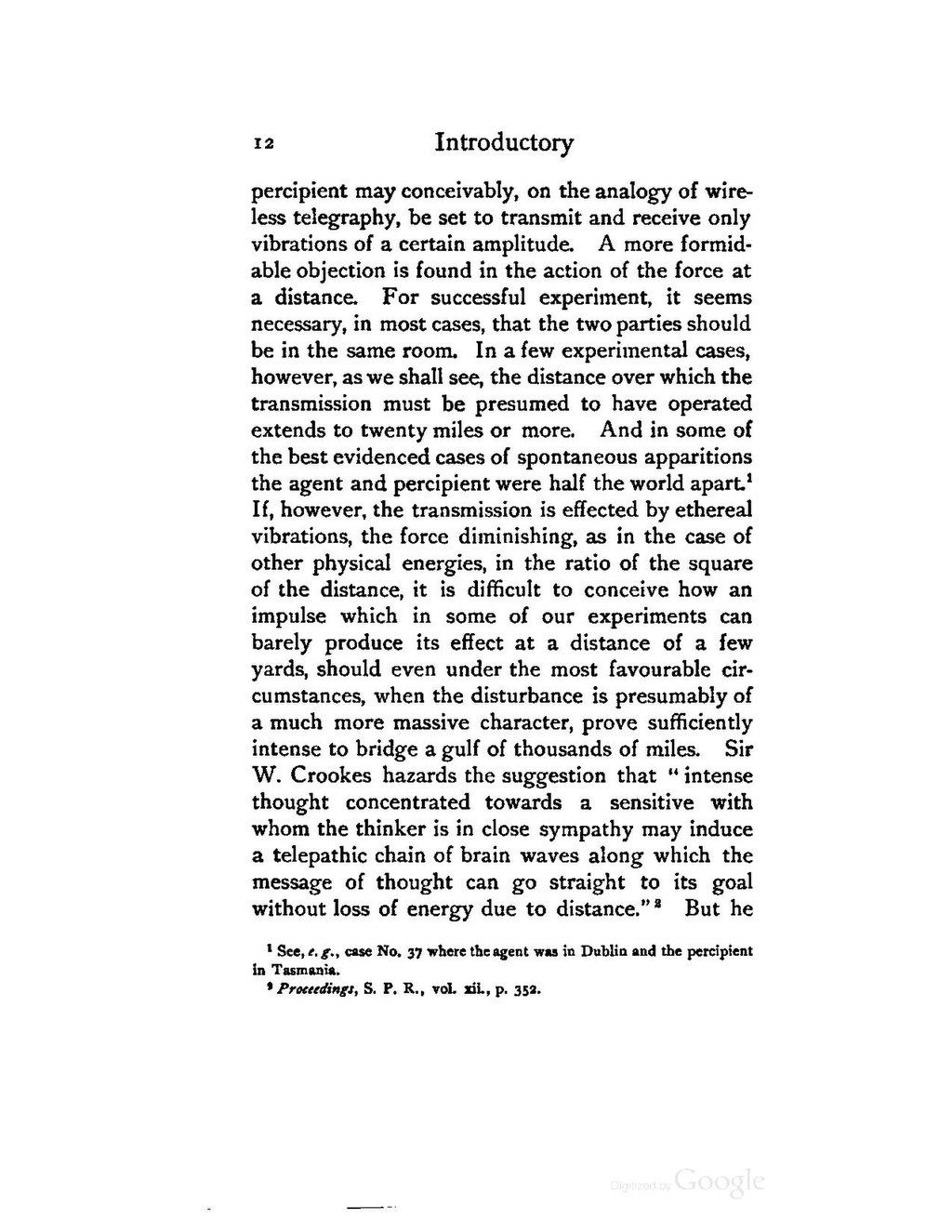percipient may conceivably, on the analogy of wireless telegraphy, be set to transmit and receive only vibrations of a certain amplitude. A more formidable objection is found in the action of the force at a distance. For successful experiment, it seems necessary, in most cases, that the two parties should be in the same room. In a few experimental cases, however, as we shall see, the distance over which the transmission must be presumed to have operated extends to twenty miles or more. And in some of the best evidenced cases of spontaneous apparitions the agent and percipient were half the world apart.[1] If, however, the transmission is effected by ethereal vibrations, the force diminishing, as in the case of other physical energies, in the ratio of the square of the distance, it is difficult to conceive how an impulse which in some of our experiments can barely produce its effect at a distance of a few yards, should even under the most favourable circumstances, when the disturbance is presumably of a much more massive character, prove sufficiently intense to bridge a gulf of thousands of miles. Sir W. Crookes hazards the suggestion that "intense thought concentrated towards a sensitive with whom the thinker is in close sympathy may induce a telepathic chain of brain waves along which the message of thought can go straight to its goal without loss of energy due to distance."[2] But he
